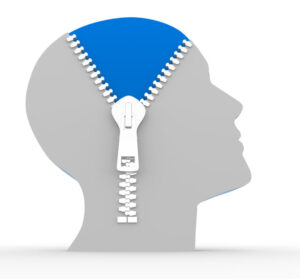By Dr. Ken Broda Bahm:

For many defense attorneys, there is a routine to the way that they’ll ask jurors to be fair at the start of their opening statement: There are two sides, you haven’t heard the whole story, please keep an open mind. It almost takes on the quality of a ritual incantation, done as much for the attorney’s peace of mind as for any effectiveness with the jurors. There is a feeling that the jurors owe you a fresh hearing. Formally, they might. But psychologically, they’re unlikely to just grant it. And begging for it too overtly can feel like you’re standing in the dock in handcuffs and prison stripes shouting, “I didn’t do it!” It is simply a reality that once jurors have heard in detail from one side, their minds are not fully “open” anymore.
It is a subject that could be researched, but I think there is good reason to believe that simply asking for an open mind doesn’t work. And in some circumstances, it is probably counter-productive in signaling a weakness or a lack of confidence in your own case. If your pleas for an open mind are too abject, you could end up building up the quality of the presentation they just heard. Ultimately, you don’t just want to tell them they haven’t heard the whole story, you want to show them. The goal is to give them a reason to believe that their current understanding is partial. This serves two functions: It encourages a fresh look, while also giving them reason to doubt the candor and the completeness of what they heard from the other side. I want to briefly suggest a three step method for preparing this pitch in your own defense opening.
Make a List of Your ‘Nuggets’ (Easily Explained Favorable Facts)
Your nuggets are not multi-part argument, and are not anything that requires a detailed narrative or consideration of evidence. Instead, they should be easily understandable story elements that help you and can be quickly explained. They also don’t need to be sufficient to win the case either, they just need to be a reason for doubting the completeness of what they’ve heard.
Edit that Nugget List During Plaintiff’s Opening
Have that nugget list — literally, a list on paper — in front of you during the Plaintiff’s opening statement. Anything that they cover well comes off the list. Anything that they omit or barely mention stays on the list. The test is not just whether they mention it, but whether they cover it enough that their response will stick with the jury. If they do, cross it off the list. You’ll still address it in your case, of course, and possibly in your opening as well, but it is no longer an easy nugget for the ‘open mind’ section of your opening statement. If you’ve done a comprehensive job of identifying all your nuggets, there will still be at least a few left on your list when the Plaintiff is done. A generic weakness, really with both sides, is that they’ll use their opening to cover their strengths, but not their weaknesses, and they’ll miss at least a few of your nuggets.
Use Your Remaining Nuggets Early in Opening
Now that you have a short list of unaddressed nuggets, use that list at the time you would otherwise be begging for an open mind. Here’s something you haven’t heard. Instead of just asserting that they haven’t heard the full story, show the reasons why their minds should still be open by going through at least a few of your remaining nuggets. You don’t have to fully cover the context or implications because at this stage, you are not nailing down the case, you are just putting your foot in the door to keep it from closing.
_____
Other Posts on Opening:
- Remember, an Open Mind is a Finite Resource
- Defendants, Include a “Here’s What You Haven’t Heard” in Your Opening Statement Introduction
- Focus on the Factors that Actually Change Minds